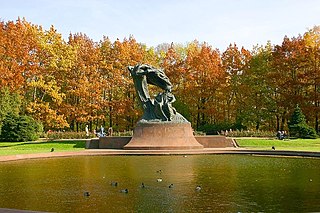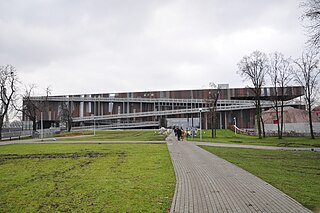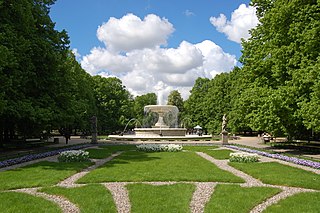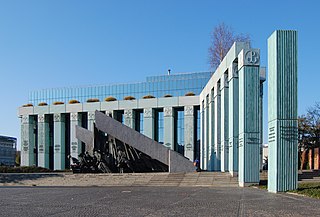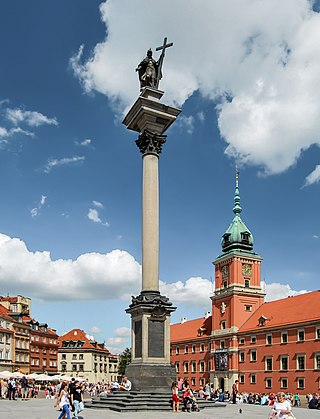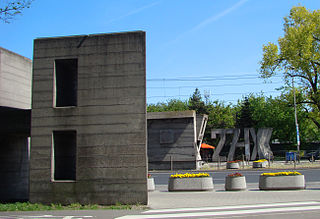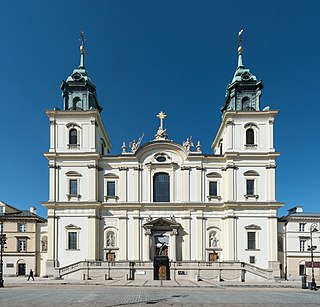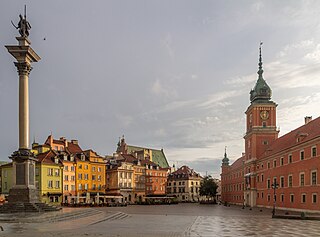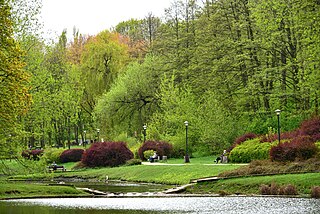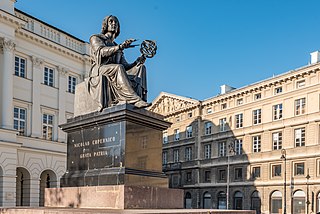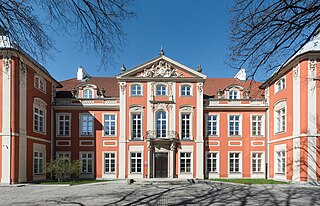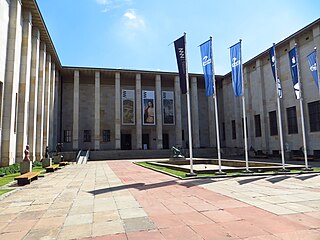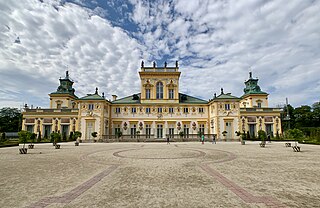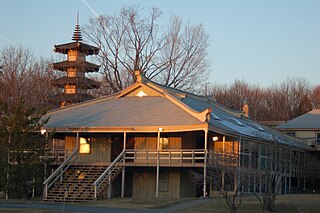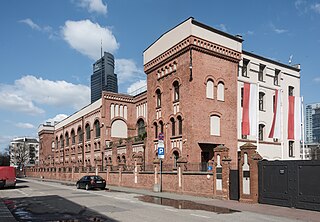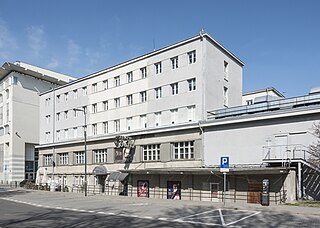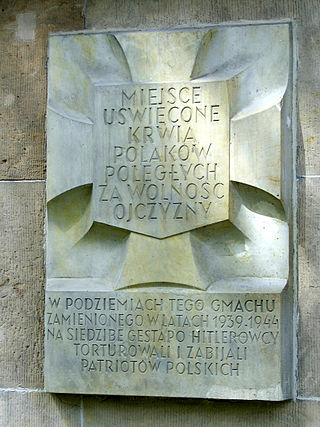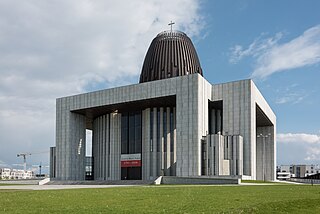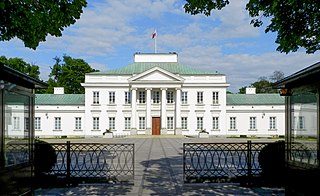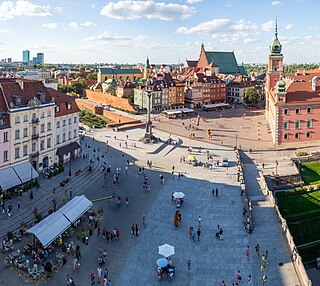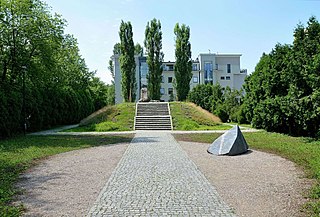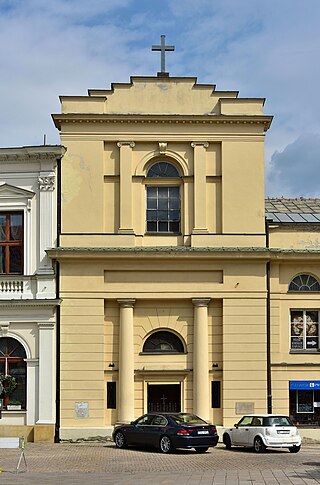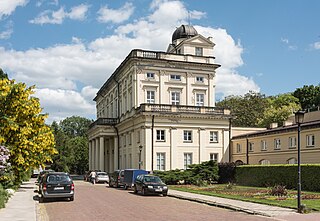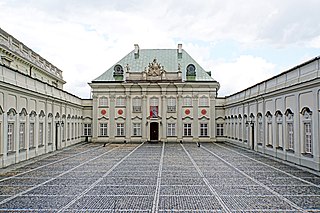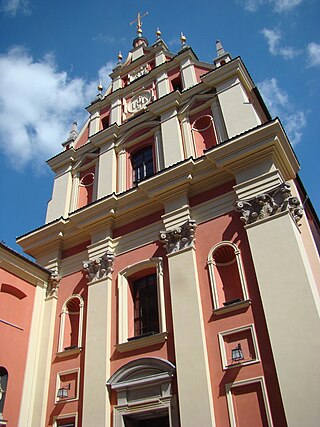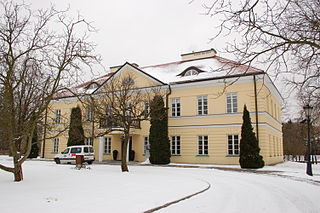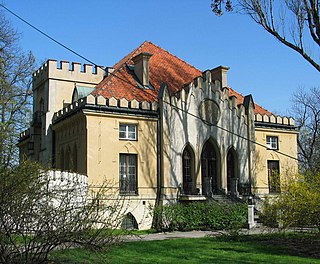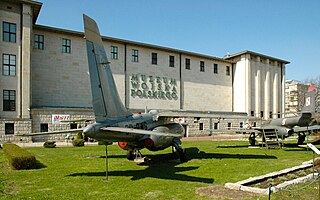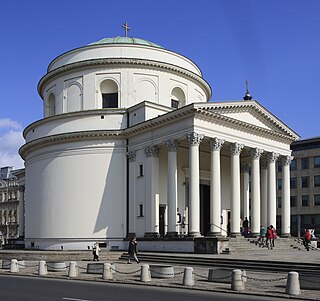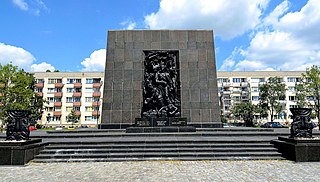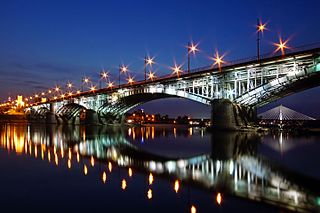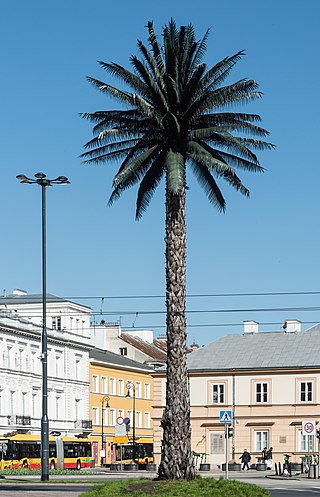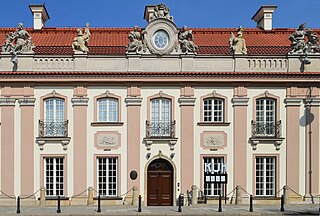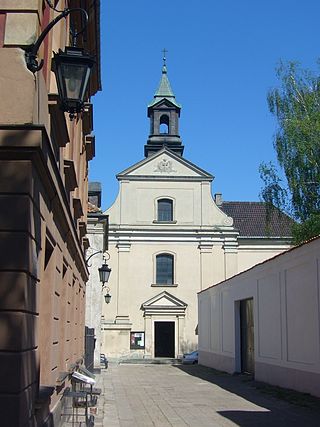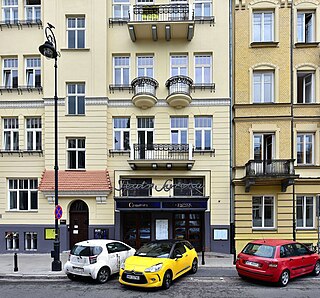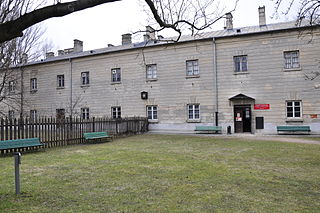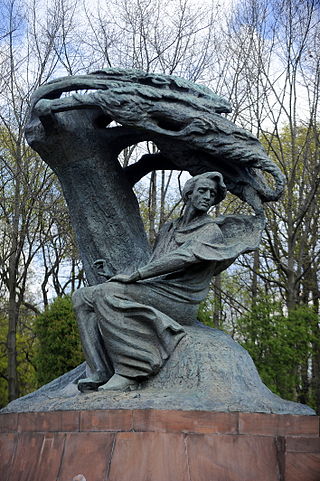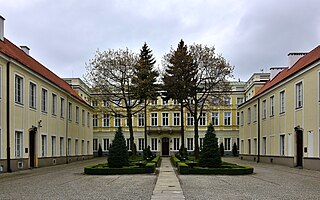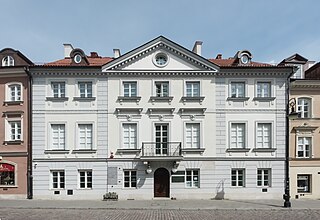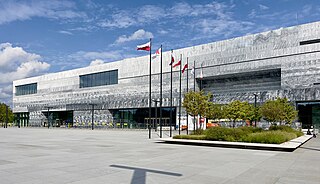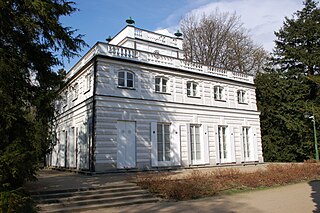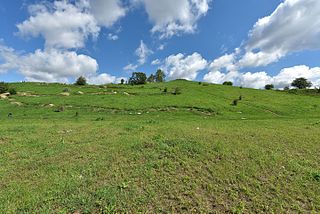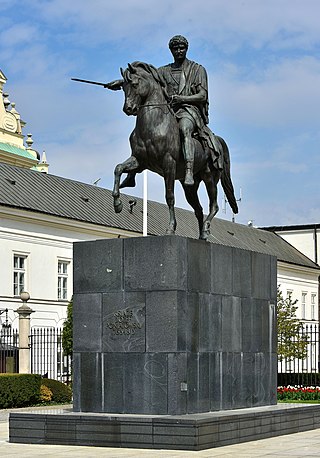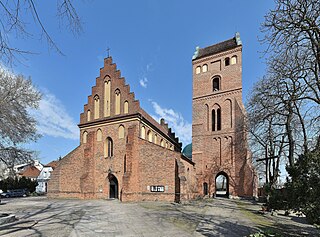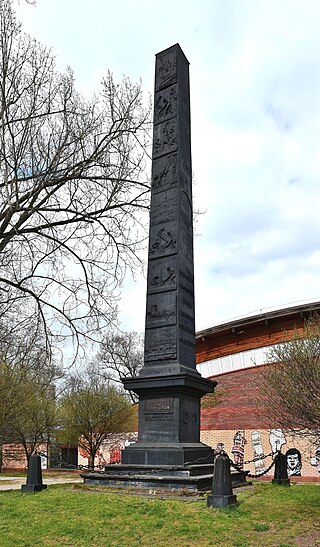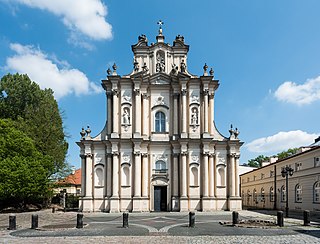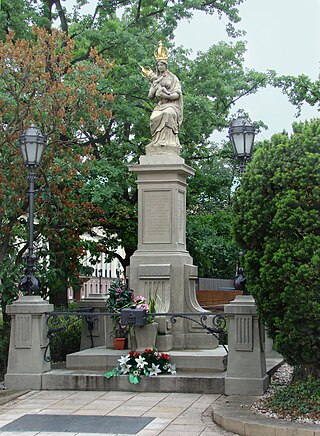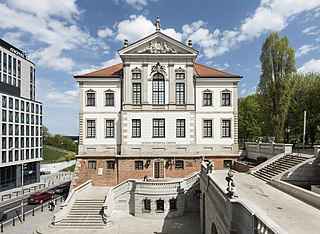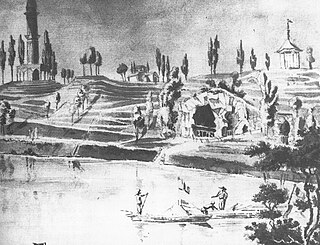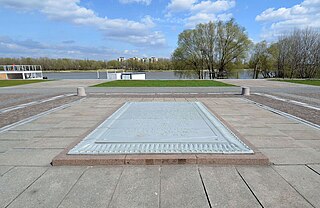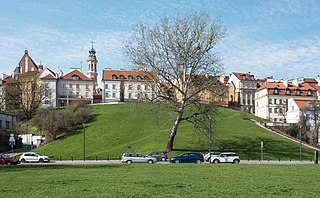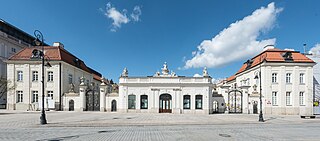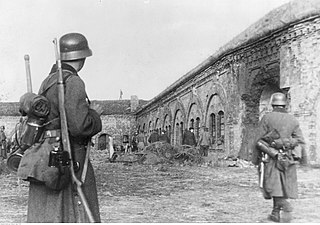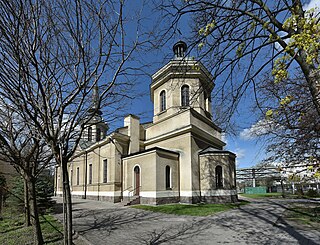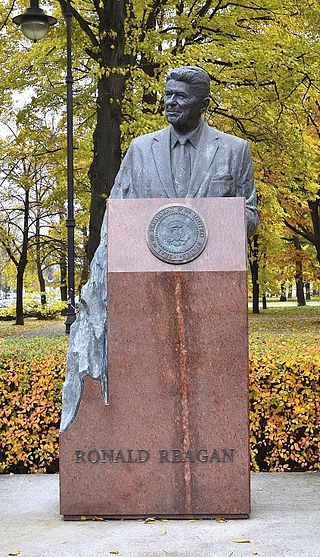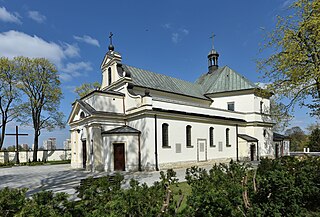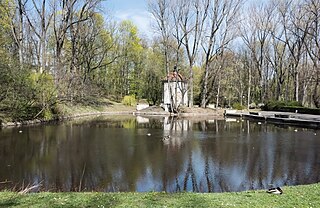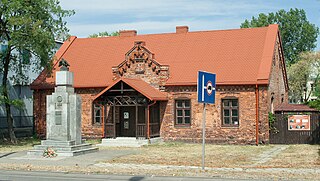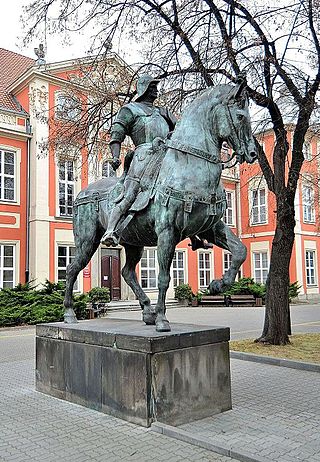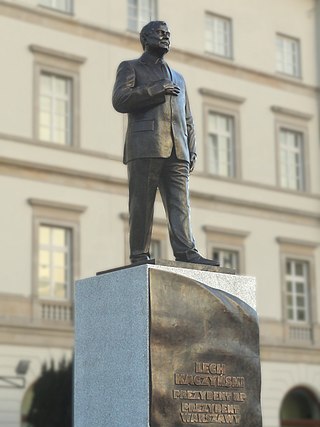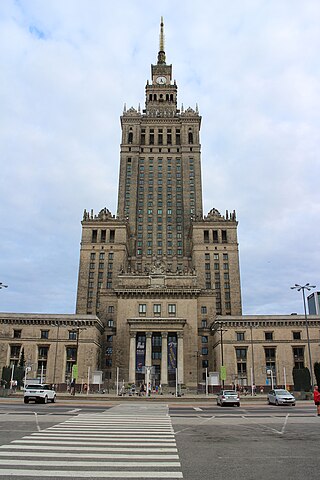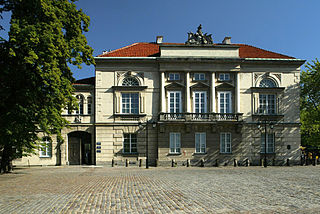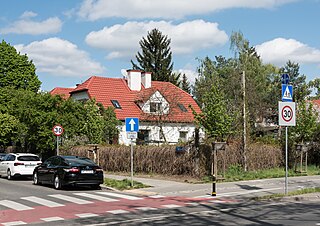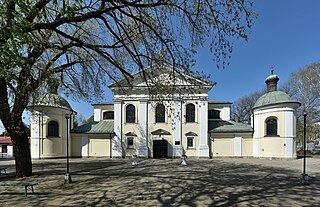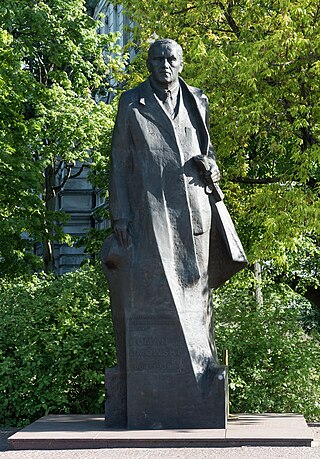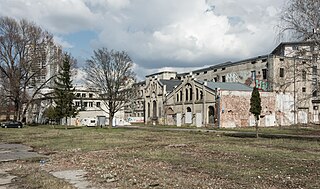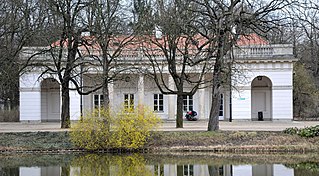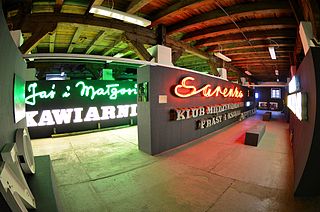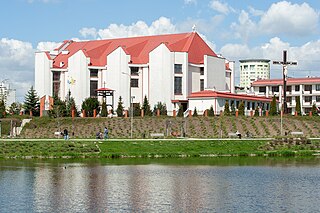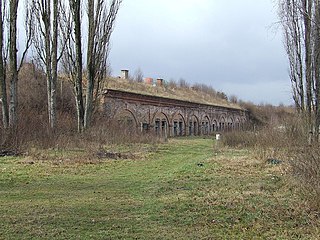100 Sights in Warsaw, Poland (with Map and Images)
Legend
Premium Sights
Book tickets, guided tours and activities in Warsaw.
Guided Free Walking Tours
Book free guided walking tours in Warsaw.
Welcome to your journey through the most beautiful sights in Warsaw, Poland! Whether you want to discover the city's historical treasures or experience its modern highlights, you'll find everything your heart desires here. Be inspired by our selection and plan your unforgettable adventure in Warsaw. Dive into the diversity of this fascinating city and discover everything it has to offer.
Sightseeing Tours in WarsawActivities in WarsawŁazienki Park or Royal Baths Park is the largest park in Warsaw, Poland, occupying 76 hectares of the city center. The park-and-palace complex lies in the Downtown district, on Ujazdów Avenue, which is part of the Royal Route linking the Royal Castle with Wilanów Palace to the south.
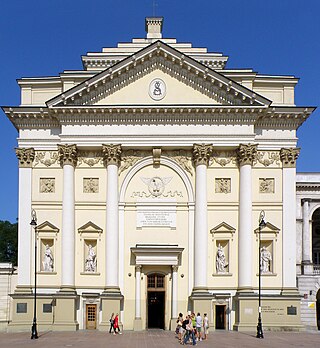
St. Anne's Church is a Roman Catholic church in the historic center of Warsaw, Poland, adjacent to the Castle Square, at Krakowskie Przedmieście 68. It is one of Poland's most notable churches with a Neoclassical facade. The church ranks among Warsaw's oldest buildings. Over time, it has seen many reconstructions, resulting in its present-day appearance, unchanged since 1788. Currently it is the main church parish of the academic community in Warsaw.
Wikipedia: St. Anne's Church, Warsaw (EN), Website, Facebook, Instagram, Youtube
Copernicus Science Centre is a science museum standing on the bank of the Vistula River in Warsaw, Poland. It contains over 450 interactive exhibits that enable visitors to single-handedly carry out experiments and discover the laws of science for themselves. The centre is the largest institution of its type in Poland and one of the most advanced in Europe. In 2018, since its opening, it has been visited by over 8 million people.
4. Saxon Garden
The Saxon Garden is a 15.5–hectare public garden in central (Śródmieście) Warsaw, Poland, facing Piłsudski Square. It is the oldest public park in the city. Founded in the late 17th century, it was opened to the public in 1727 as one of the first publicly accessible parks in the world.
Umschlagplatz was the term used during The Holocaust to denote the holding areas adjacent to railway stations in occupied Poland where Jews from ghettos were assembled for deportation to Nazi death camps. The largest collection point was in Warsaw next to the Warsaw Ghetto. In 1942 between 254,000 – 265,000 Jews passed through the Warsaw Umschlagplatz on their way to the Treblinka extermination camp during Operation Reinhard, the deadliest phase of the Holocaust in Poland. Often those awaiting the arrival of Holocaust trains, were held at the Umschlagplatz overnight. Other examples of Umschlagplatz include the one at Radogoszcz station - adjacent to the Łódź Ghetto - where people were sent to Chełmno extermination camp and Auschwitz.
Warsaw Uprising Monument is a monument in Warsaw, Poland, dedicated to the Warsaw Uprising of 1944. Unveiled in 1989, it was designed by Jacek Budyn and sculpted by Wincenty Kućma. It is located on the southern side of Krasiński Square.
7. Sigismund's Column
Sigismund's Column, originally erected in 1644, is located at Castle Square, Warsaw, Poland and is one of Warsaw's most famous landmarks as well as the first secular monument in the form of a column in modern history. The column and statue commemorate King Sigismund III Vasa, who in 1596 had moved Poland's capital from Kraków to Warsaw. It is part of the Historic Centre of Warsaw, which was designated a UNESCO World Heritage Site in 1980.
8. 1939
The September Barricade Monument is a brutalist mounument in Warsaw, Poland. It is located in the district of Ochota, at Grójecka Street, near the intersection with Opaczewska Street. The monument commemorates a barricade that was constructed by the Polish Armed Forces during the Siege of Warsaw, and used between 8 and 27 September 1939. It consists of three large concrete sculptures, depicting numerals of dates 8-IX, the day the barricade was erected, 1939, the year of the siege, and 27-IX, the day the city capitulated. It was designed by Julian Pałka, and unveiled on 12 September 1979.
9. Warsaw Citadel
Warsaw Citadel is a 19th-century fortress in Warsaw, Poland. It was built by order of Tsar Nicholas I after the suppression of the 1830 November Uprising in order to bolster imperial Russian control of the city. It served as a prison into the late 1930s, especially the dreaded Tenth Pavilion of the Warsaw Citadel ; the latter has been a museum since 1963.
10. Holy Cross Church
The Church of the Holy Cross is a Roman Catholic house of worship in Warsaw, Poland. Located on Krakowskie Przedmieście opposite the main Warsaw University campus, it is one of the most notable Baroque churches in Poland's capital.
11. Old Town
Warsaw Old Town, also known as Old Town, and historically known as Old Warsaw, is a neighbourhood, and an area of the City Information System, in the city of Warsaw, Poland, located within the district of Śródmieście. It is the oldest portion of the city, and contains numerous historic buildings, mostly from 17th and 18th centuries, such as the Royal Castle, city walls, St. John's Cathedral, and the Barbican, the Old Town Market Square and the Warsaw Mermaid Statue. The settlement itself dates back to between the 13th and 14th centuries, and was granted town privileges c. 1300.
12. Arkadia
The Arcadia Park is an urban park in Warsaw, Poland. It is located in the district of Mokotów between Puławska Street, Żywnego Street, Piaseczyńska Street, Idzikowskiego Street, and around the gardens of Królikarnia Palace. It was opened in 1970.
13. Nicolaus Copernicus Monument
The Nicolaus Copernicus Monument in Warsaw is one of the Polish capital's notable landmarks. It stands before the Staszic Palace, the seat of the Polish Academy of Sciences on Krakowskie Przedmieście. Designed by Bertel Thorvaldsen in 1822, it was completed in 1830. Thorvaldsen's original plaster model from 1822 and a smaller study from 1821 are both held by the Thorvaldsen Museum in Copenhagen.
14. Czapski Palace
The Czapski Palace is a palatial complex in the center of Warsaw, located at 5 Krakowskie Przedmieście. It is considered one of the most distinguished examples of rococo architecture in Poland's capital.
15. Statue of the Little Insurgent
The Little Insurrectionist is a statue in commemoration of the child soldiers who fought and died during the Warsaw Uprising of 1944. It is located on Podwale Street, Warsaw, Poland, next to the ramparts of Warsaw's Old Town.
16. Tomb of the Unknown Soldier
The Tomb of the Unknown Soldier is a monument in Warsaw, Poland, dedicated to the unknown soldiers who have given their lives for Poland. It is one of many such national tombs of unknowns that were erected after World War I, and the most important such monument in Poland.
17. Presidential Palace
The Presidential Palace is the official residence of the Polish head of state and president alongside the Belweder Palace, located in Warsaw, Poland. Originally constructed in 1643 as an aristocratic mansion, it was rebuilt and remodelled several times over the course of its existence by notable architects. The current neoclassical palace was completed in 1818.
18. Warsaw Central
Stanisław Moniuszko Central Station is the main railway station in Warsaw and the largest railway station in Poland. It is located in the Śródmieście district, at Aleje Jerozolimskie 54, between Jana Pawła II Avenue and Emilii Plater Street, above the cross-city tunnel connecting the Warszawa Centralna station with the Warszawa Wschodnia and Warszawa Zachodnia stations.
Wikipedia: Dworzec Centralny im. Stanisława Moniuszki (PL), Website
19. National Museum in Warsaw
The Warsaw National Museum, also known as the National Museum in Warsaw, is a national museum in Warsaw, one of the largest museums in Poland and the largest in the capital. It comprises a rich collection of ancient art, counting about 11,000 pieces, an extensive gallery of Polish painting since the 16th century and a collection of foreign painting including some paintings from Adolf Hitler's private collection, ceded to the museum by the American authorities in post-war Germany. The museum is also home to numismatic collections, a gallery of applied arts and a department of oriental art, with the largest collection of Chinese art in Poland, comprising some 5,000 objects.
20. Polin Museum of the History of Polish Jews
POLIN Museum of the History of Polish Jews is a museum on the site of the former Warsaw Ghetto. The Hebrew word Polin in the museum's English name means either "Poland" or "rest here" and relates to a legend about the arrival of the first Jews to Poland. Construction of the museum in designated land in Muranów, Warsaw's prewar Jewish quarter, began in 2009, following an international architectural competition won by Finnish architects Rainer Mahlamäki and Ilmari Lahdelma.
Wikipedia: POLIN Museum of the History of Polish Jews (EN), Website
21. Wilanow Palace
Wilanów Palace is a former royal palace located in the Wilanów district of Warsaw, Poland. It was built between 1677–1696 for king of Poland John III Sobieski according to a design by architect Augustyn Wincenty Locci. Wilanów Palace survived Poland's partitions and both World Wars, and so serves as one of the most remarkable examples of Baroque architecture in the country.
22. Wu Bong Sah
The Kwan Um School of Zen (관음선종회,觀音禪宗會) (KUSZ) is an international school of zen centers and groups founded in 1983 by Zen Master Seung Sahn. The school's international head temple is located at the Providence Zen Center in Cumberland, Rhode Island, which was founded in 1972 shortly after Seung Sahn first came to the United States. The Kwan Um style of Buddhist practice combines ritual common both to Korean Buddhism as well as Rinzai school of Zen, and their morning and evening services include elements of Huayan and Pure Land Buddhism. While the Kwan Um Zen School comes under the banner of the Jogye Order of Korean Seon, the school has been adapted by Seung Sahn to the needs of Westerners. According to James Ishmael Ford, the Kwan Um School of Zen is the largest Zen school in the Western world.
23. Warsaw Rising Museum
The Warsaw Rising Museum, in the Wola district of Warsaw, Poland, is dedicated to the Warsaw Uprising of 1944. The institution of the museum was established in 1983, but no construction work took place for many years. It opened on July 31, 2004, marking the 60th anniversary of the uprising.
24. Warsaw Zoo
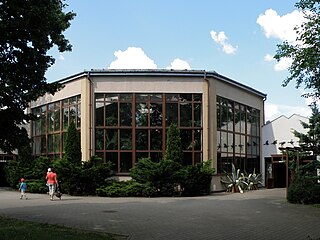
The Warsaw Zoological Garden, known simply as the Warsaw Zoo, is a scientific zoo located alongside the Vistula River in Warsaw, Poland. Opened in 1928, the zoo covers about 40 hectares in central Warsaw, and sees over 700,000 visitors annually, making it one of the most popular zoos in Poland. It is home to over 11,000 animals representing more than 500 species.
Wikipedia: Warsaw Zoo (EN), Website, Facebook, Tripadvisor, Instagram, Youtube
25. Studio Buffo
Studio Buffo Theatre – a musical theatre in Warsaw operating since 1956. Since 1992 under the current name and under the management of Janusz Stokłosa (president) and Janusz Józefowicz. The first private theatre in Warsaw after World War II and for many years the only one.
26. Pomnik AL i AK w powstaniu warszawskim
Tchorek plaques are a common design of memorial plaque in Warsaw, Poland, used to commemorate places where battles or executions took place during the German occupation of the city during World War II. They are based on an original design by sculptor Karol Tchorek from 1949.
27. Temple of Divine Providence
The Temple of Divine Providence and Pantheon of Great Poles (in Polish, Panteon Wielkich Polaków, in southern Warsaw's Wilanów district, is a principal Roman Catholic church in Poland. The backstory of its construction began in the 18th century. The Temple is conceived as a national and religious symbol for Poland. The complex comprises the Church of Divine Providence, the Museum of John Paul II and Primate Wyszyński, and the Pantheon of Great Poles.
28. Zachęta National Gallery of Art
The Zachęta National Gallery of Art is a contemporary art museum in the center of Warsaw, Poland. The Gallery's chief purpose is to present and support Polish contemporary art and artists. With numerous temporary exhibitions of well-known foreign artists, the gallery has also established itself internationally.
29. Belweder Palace
Belweder is a neoclassical palace in Warsaw, Poland. Erected in 1660 and remodelled in the early 1800s, it is one of several official residences used by Polish presidents as well as a state guest house for visiting heads of state. The complex is situated south of Warsaw's city center, in the vicinity of the historic Royal Baths Park (Łazienki).
30. Plac Zamkowy
Castle Square is a historic square in front of the Royal Castle – the former official residence of Polish monarchs – located in Warsaw, Poland. It is a popular meeting place for tourists and locals. The square, of somewhat triangular shape, features the landmark Sigismund's Column to the south-west, and is surrounded by historic townhouses. It marks the beginning of the bustling Royal Route extending to the south.
31. Krasinski Palace
The Krasiński Palace, also known as the Palace of the Commonwealth, is a reconstructed Baroque palace in Warsaw, Poland, on Krasiński Square. Initially erected between 1677 and 1683 for the powerful Krasiński family, it was heavily damaged during World War II and rebuilt in the mid-20th century.
32. Kopiec Mordechaja Anielewicza
The Anielewicz Bunker, also known as the Anielewicz Mount was the headquarters and hidden shelter of the Jewish Combat Organization (ŻOB), a Jewish resistance group in the Warsaw Ghetto in Poland during the Nazi German occupation of World War II.
33. Kościól Św. Karola Boromeusza
The Church of St. Charles Borromeo – a church located at 21 Chłodna Street in Warsaw's Mirów district. It was built in the years 1841–1849 in the Neo-Renaissance style according to the design of Henryk Marconi.
Wikipedia: Kościół św. Karola Boromeusza w Warszawie (Wola) (PL)
34. Kościół Niepokalanego Poczęcia Najświętszej Maryi Panny
The Church of the Immaculate Conception of the Blessed Virgin Mary in Warsaw, known as Res Sacra Miser, is a former convent church of the Discalced Carmelite nuns, currently the rector's church in Warsaw at Krakowskie Przedmieście. The temple is located in the building of the Caritas Charity Center of the Archdiocese of Warsaw Res Sacra Miser.
35. Botanical Garden
The Botanical Garden of the University of Warsaw is a botanical garden located at Aleje Ujazdowskie 4 in Warsaw, which since 1818 has been under the care of the Warsaw School of Medicine, then the Royal University of Warsaw, and since 1916 the University of Warsaw, and renamed the Botanical Garden of the University of Warsaw.
Wikipedia: Ogród Botaniczny Uniwersytetu Warszawskiego (PL), Website
36. Copper-Roof Palace
The Copper-Roof Palace is an 18th-century palace in Warsaw, Poland. It takes its name from the copper roof, a rarity in the first half of the 18th century. Since 1989 the palace has been a branch of the Royal Castle Museum.
37. Old Orangery
The Old Orangery, also known as the Old Orangery, originally the Great Orangery – a classicist orangery in the Royal Łazienki Park in Warsaw, erected in the years 1786–1788 according to the design of Dominik Merlini.
38. Katedra Polowa Wojska Polskiego
The Field Cathedral of the Polish Army is the main garrison church of Warsaw and the representative cathedral of the entire Polish Army. In the past the church served a variety of communities and roles: it used to be the church of the Collegium Nobilium and in the 19th century was also turned into a Russian Orthodox church. Currently all major military religious feasts in Warsaw are held there.
39. Church of the Gracious Mother of God
The Jesuit Church, also known as Church of the Gracious Mother of God, is an ornate church within the Old Town precinct in Warsaw, Poland. The temple stands on Świętojańska Street, adjacent to St John's Cathedral, and is one of the most notable mannerist-style churches in Warsaw.
40. Folwark Sielce
Sielce Grange in Warsaw – a former royal grange founded between 1775 and 1786 by King Stanisław August Poniatowski, located in Sielc, in the immediate vicinity of the Royal Łazienki. Currently, it is located at 3 Zbyszka Cybulskiego Street in Warsaw.
41. Pałac Szustra
The Szustra Palace, also known as the Szustra Palace or the Lubomirski Palace, is a palace in Warsaw located at 2 Morskie Oko Street in the Morskie Oko Park in the Mokotów district. It is the seat of the Stanisław Moniuszko Warsaw Music Society.
42. Polish Army Museum
Museum of the Polish Army is a museum in Warsaw documenting the military history of Poland. Established in 1920 under the Second Polish Republic, it formerly occupied a wing of the building of the Polish National Museum and now occupies a building of its own at the Warsaw Citadel, as well as several branches in Poland. It is Warsaw's second largest museum and the largest collection of military objects in Poland. The collection illustrates a thousand years of Polish military history, from the 10th century to the Second World War.
43. St. Alexander's Church
St. Alexander's Church is a Roman Catholic church located on Triple Cross Square in central Warsaw, Poland. It is near the south end of New World Street, the Royal Route, and Warsaw's Old Town. The church is one of Warsaw's most recognizable landmarks.
44. Pierwszy Pomnik Bohaterów Getta
The Monument to the Ghetto Heroes is a monument in Warsaw, Poland, commemorating the Warsaw Ghetto Uprising of 1943 during the Second World War. It is located in the area which was formerly a part of the Warsaw Ghetto, at the spot where the first armed clash of the uprising took place.
45. Poniatowski Bridge
The Poniatowski Bridge is a bridge in Warsaw, Poland. Originally built between 1904 and 1914, it was damaged in each World War and rebuilt after each. It spans the Vistula River, connecting Warsaw's Powiśle and Praga districts. Its viaduct is an extension of Jerusalem Avenue, a principal Warsaw thoroughfare.
46. Skarpa warszawska
Warsaw escarpment – the common name of the high (western) Vistula escarpment in Warsaw. This escarpment is the most characteristic natural element of Warsaw's terrain, shaping the landscape and spatial structure of the city.
47. Palm
Greetings from Jerusalem Avenue is a site-specific artwork in the form of a life-size artificial date palm. It was designed by Polish artist Joanna Rajkowska, and is located on the Charles de Gaulle Roundabout, where Jerusalem Avenue intersects with Nowy Świat street in the Polish capital of Warsaw. It was erected on December 12, 2002.
48. Branicki Palace
The Branicki Palace is an 18th-century magnate's mansion in Warsaw, Poland. Situated at the junction of Podwale and Miodowa Streets, it was constructed for the aristocratic Branicki-Gryf family in the Rococo style. The palace is known for its elaborate sculptures and statues above the cornice.
49. Kościół pw. św. Benona
St. Benno's Church, actually the rector church of St. Benno in Warsaw, is a church located in Warsaw's New Town at 1 Piesza Street, belonging to the Redemptorist Congregation. The Redemptorist Provincial Curia is also located at the church.
Wikipedia: Kościół św. Benona w Warszawie (PL), Website, Facebook
50. Syrena
Syrena Theatre is a musical theatre located at 3 Litewska Street in Warsaw. He specializes in revue and satirical repertoire, and since 1997 also in comedy and music performances. Musicals are staged, and since 2009 also dramatic plays.
51. X Pawilon
The 10th Pavilion of the Warsaw Citadel – one of the pavilions of the Warsaw Citadel, the seat of a branch of the Museum of Independence devoted to the national liberation struggles during the Russian partition.
52. Frédéric Chopin Monument
The Frédéric Chopin Monument in Warsaw is a large bronze statue of Frédéric Chopin (1810–1849), designed by Wacław Szymanowski, that stands in the upper part of Warsaw's Royal Baths Park, adjacent to Aleje Ujazdowskie.
53. Społeczność Chrześcijańska Puławska
The "Puławska" Christian Community in Warsaw is one of the congregations of the Church of Christ in the Republic of Poland operating in Warsaw. The pastor superior of the congregation is Zbigniew Tarkowski.
Wikipedia: Społeczność Chrześcijańska „Puławska” w Warszawie (PL), Website
54. Pałac Arcybiskupi
The Borchów Palace, also known as the House of the Archbishops of Warsaw or the Archbishop's Palace, is a palace located at 17/19 Miodowa Street in Warsaw. From 1843 it was the seat of the archbishops of Warsaw.
55. Maria Skłodowska-Curie Museum
The Maria Skłodowska-Curie Museum is a museum in Warsaw, Poland, devoted to the life and work of Polish double Nobel laureate Maria Skłodowska-Curie (1867–1934), who discovered the chemical elements polonium and radium.
Wikipedia: Maria Skłodowska-Curie Museum (EN), Facebook, Instagram, Website
56. Museum of Modern Art
The Museum of Modern Art in Warsaw, also known as MSN Warsaw, is a modern and contemporary art museum in Warsaw, Poland. The museum was founded in 2005 and the director of the museum since June 6, 2007 has been Joanna Mytkowska. MSN was a cultural institution co-run by the Ministry of Culture and National Heritage and the city of Warsaw, from 2023 it is a local government cultural institution run by the city of Warsaw.
57. Polish History Museum
The Museum of Polish History or the Polish History Museum is a museum and national cultural institute in Warsaw, Poland. The purpose of the museum is to present the most important events in Polish history, with a particular emphasis on Polish traditions of freedom. Since September 2023, the new museum building has been located in the Warsaw Citadel.
58. Jewish Historical Institute

The Jewish Historical Institute, also known as the Emanuel Ringelblum Jewish Historical Institute, is a public cultural and research institution in Warsaw, Poland, chiefly dealing with the history of Jews in Poland and Jewish culture.
59. White Pavilion
The White Pavilion, also known as the White Pavilion, is a classicist building located in the Royal Łazienki Park in Warsaw. It was erected in the years 1774–1776 according to the design of Dominik Merlini, who gave it the features of a suburban, summer villa.
60. Holy Trinity Church
The Holy Trinity Church, also known as Zug's Protestant Church, is a Lutheran church in central Warsaw, Poland, and one of two Augsburg Evangelical temples in the city. Designed by Szymon Bogumił Zug, it is one of the largest churches in Warsaw and one of the most notable for its round design.
61. Górka Kazurka
The Three Peaks Hill, commonly known as Kazurka or Górka Kazurka, is an artificial hill in the Warsaw district of Ursynów, in the Cichociemnych Spadochroniarzy AK Park, in the area of Kazury Street in the Wyżyny housing estate, about 200 meters from the northern border of the Kabacki Forest.
62. Prince Józef Antoni Poniatowski Monument
The Prince Józef Poniatowski Monument is a monument currently located at 46/48 Krakowskie Przedmieście in the courtyard of the Presidential Palace. Created by Rome-based Danish-Icelandic sculptor Bertel Thorvaldsen in 1829, it depicts Józef Poniatowski (1763–1813) riding and horse and dressed as Roman general.
63. Pomnik Janusza Korczaka
Monuments to Janusz Korczak in Warsaw – there are three monuments to Janusz Korczak in Warsaw:Monument in the Świętokrzyski Park – 52°14′01.29"N 21°00′16.74"The design of the monument was selected in an international competition organized by the Shalom Foundation and the Polish Janusz Korczak Association.It is one of the newest monuments in Warsaw. The cornerstone for the construction was laid on 19 September 2003 by the President of Warsaw, Lech Kaczyński, and the ceremonial unveiling of the monument took place on 1 June 2006, on Children's Day. It depicts Janusz Korczak, surrounded by children, under a dead stump of a tree, whose dry branches form a menorah. At the back of the monument there is a small fountain and plaques commemorating the founders of the monument. On the right side of the monument there is a small stone with a carved inscription:
64. Kościół parafialny pw. Nawiedzenia Najświętszej Maryi Panny
The Church of the Visitation of the Most Blessed Virgin Mary, otherwise known as St. Mary's Church is a church in Warsaw, Poland. It is one of oldest buildings and one of the few surviving examples of Gothic architecture in the city. It is located at ulica Przyrynek 2.
Wikipedia: Church of the Visitation of the Blessed Virgin Mary, Warsaw (EN), Website, Facebook
65. Replika samochodu pancernego Kubuś
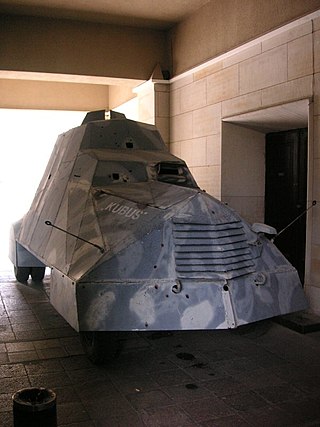
Kubuś is a Polish improvised fighting vehicle used by the Home Army in the Warsaw Uprising during World War II. The single vehicle was built in secret to function as an armoured car and armoured personnel carrier for assaults by the Home Army, where it suffered damage and was abandoned after two weeks of service. The original Kubuś vehicle survived the war and is on display in the Polish Army Museum, while a full-scale replica was built for the Warsaw Uprising Museum and frequently takes part in various open-air festivals and reenactment shows.
66. Pomnik Budowy Szosy Brzeskiej
The Monument to the Construction of the Brest Highway – a historic obelisk located in Warsaw's Grochów district, at Grochowska Street. Unveiled in 1825 to commemorate the cobblestone road leading from Warsaw to Brest, the so-called Brest road, built in the years 1820–1823.
67. Kościół Wizytek
Church of St. Joseph of the Visitationists commonly known as the Visitationist Church is a Roman Catholic church in Warsaw, Poland, situated at Krakowskie Przedmieście 34. It is one of the most notable rococo churches in Poland's capital. This is the third church on the site to serve the monastic community for which it was built, the original church having been erected in 1651. Construction on this church was begun in 1728 and completed in 1765.
68. Matka Boska Passawska
The Statue of Our Lady of Passau is a votive sculpture of the Virgin Mary located on Krakowskie Przedmieście in Warsaw, near the Castle Square. It is the second – after the Sigismund's Column from 1644 – the oldest monument in Warsaw.
69. Frederic Chopin Museum
Ostrogski Palace, or Ostrogski Castle, is a fortified mansion in the city center of Warsaw, Poland, on Tamka Street. The castle was originally constructed for the powerful Ostrogski family in the 17th century. It currently houses the Fryderyk Chopin Society and the Fryderyk Chopin Museum.
70. Elizeum
Elizeum – an underground rotunda made of brick located on the slope of the Warsaw escarpment, located in the Marshal Edward Rydz-Śmigły Park near the intersection of Książęca and Kruczkowskiego Streets in Warsaw.
71. Płyta Desantu 3 Dywizji Piechoty I Armii WP
The Landing Plate of the 3rd Infantry Division of the 1st Polish Army, also known as the Czerniakowska Landing Plate or the Czerniakowski Landing Plate, is a monument in the form of a slab located in Warsaw on the main axis of the avenue of the Marshal Edward Rydz-Śmigły Park between the banks of the Vistula River and the Wisłostrada River. It commemorates the landing of soldiers of the 1st Polish Army, hurrying to help the fighting insurgents in September 1944.
72. Gnojna Góra
Góra Gnojna (Gnojna Mountain), also known as Góra Gnojowa, is a hill located on the Vistula escarpment in the Old Town of Warsaw between the outlets of Celna and Dawna Streets and Bugaj Street. Former garbage and waste dump of Old Warsaw.
73. Potocki Palace
The Potocki Palace is a large baroque palace in Warsaw, located at Krakowskie Przedmieście 15, directly opposite the Presidential Palace. It was originally built for the Denhoff family and in the late 18th century became the property of the Potocki family.
74. Fort IX Twierdzy Warszawa Czerniaków
Fort IX – one of the forts of the outer ring of the Warsaw Fortress, built in the 80s of the nineteenth century. It is located in Sadyba, in Warsaw's Mokotów district. Powsinska Street runs through its area.
75. Church of the Ascension of the Lord
The Church of the Ascension of the Lord in Warsaw is an Evangelical-Augsburg church located at Puławska Street in Warsaw. It was erected in the years 1902–1904 as an Orthodox garrison church dedicated to St. Peter and Paul. Property of the Evangelical parish since 1920.
Wikipedia: Kościół Wniebowstąpienia Pańskiego w Warszawie (PL)
76. Ronald Reagan Monument
The Ronald Reagan Monument is a statue located in Warsaw, Poland, at Ujazdów Avenue, near the corner with Jana Matejki Street, dedicated to Ronald Reagan, the president of the United States from 1981 to 1989. It was designed by sculptor Władysław Dudek and unveiled on 21 November 2011.
77. Fort Piłsudskiego
Fort Cze – a fort of the inner ring of the Warsaw Fortress, erected in the 80s of the nineteenth century. The fort was called Fort Cz by the soldiers of the Russian Empire from the name of Czerniaków, on German maps it was called Tsche in the transcription. In 1921 it was named the fort of Dąbrowski's Legions, in 1928 it was renamed Piłsudski's fort. Due to its name, it is sometimes confused with the fort of the Legions.
78. Kościół parafialny pw. Matki Bożej Królowej Polski
The parish church of Our Lady Queen of Polish – a historic church located in the Warsaw district of Żoliborz, in Marymont, erected in the seventeenth century as a summer residence of Queen Marie Casimire. The parish church of the parish of Our Lady Queen of Polish.
Wikipedia: Kościół Matki Bożej Królowej Polski w Warszawie (PL), Website
79. Fort VII Twierdzy Warszawa Zbarż
Fort VII ("Zbarż") – one of the forts of the outer ring of the Warsaw Fortress, located in the Włochy district in the Zbarż housing estate between the following streets: Wirażowa, Żwirki i Wigury, Winiarska and Benetta, with an area of 29.7 ha.
80. Park na Książęcem
Park Na Książęcem – a park located in Warsaw, in the area of the Vistula escarpment, between Książęca and Kruczkowskiego streets, the viaduct of the Poniatowski Bridge, the area of the Polish Army Museum and the National Museum, and the building of the Stock Exchange Centre. Part of the Marshal Edward Rydz-Śmigły Park.
81. Pałac Sapiehów
Sapieha Palace is one of the palaces in Warsaw New Town district of Warsaw, Poland. Started by the powerful Sapieha family who gave the name to the building, it currently houses the Environmental Protection School Complex.
82. Teatr Żydowski
The Ester Rachel and Ida Kaminska Jewish Theater is a state theatrical institution in Warsaw, Poland. It was named after the Polish-Jewish actress Ester Rachel Kamińska, who was called the "mother of Yiddish theater," and her daughter, the Academy Award-nominated actress Ida Kamińska. Ida Kamińska directed the theater and acted in its productions from the time of its founding until 1968.
83. Murowanka
Murowanka – the common name of a small, one-storey building of the first school in Wawer, built in 1903 from red brick, where classes were held until 1948. Since 2019, it has become the headquarters of the Foundation for Great Stories.
84. Pomnik Bartolomeo Colleoniego
The Monument to Bartolomeo Colleoni is an equestrian statue of the Italian condottiero in the service of the Republic of Venice, Bartolomeo Colleoni, located in Warsaw in the courtyard of the Czapski Palace at 5 Krakowskie Przedmieście Street.
85. Fotoplastikon Warszawski
The Warsaw Fotoplastikon is a stereoscopic theatre based on the Kaiserpanorama system of rotating stereoscopic images located in Warsaw, Poland. Operating at the same location since 1946, it is the oldest stereoscopic theatre in Europe still in business at its original location. Today it operates as a branch of the Museum of the Warsaw Uprising.
86. Muzeum Kowalstwa
The Blacksmithing Museum – a private museum in Warsaw, founded in the early 90s of the twentieth century by the married couple Eleonora and Zdzisław Gałecki. Currently, it is run by a master blacksmith – Kamil Gałecki. The museum includes a forge of a wooden oak structure with an area of 30 m², with a dovetail tip. It has equipment characteristic of suburban forges from the beginning of the twentieth century from the area of Mazovia. It is the first and only facility of this type in Poland with a statute approved by the Minister of Culture and National Heritage. It is located on the edge of the Służewiecka Valley in Warsaw's Mokotów district at 84 Przy Grobli Street.
87. Poległym i Pomordowanym na Wschodzie
The Monument to the Fallen and Murdered in the East is a monument in Warsaw, Poland which commemorates the victims of the Soviet invasion of Poland during World War II and subsequent repressions. It was unveiled on 17 September 1995, on the 56th anniversary of the Soviet invasion of 1939.
Wikipedia: Monument to the Fallen and Murdered in the East (EN)
88. Fort VI Twierdzy Warszawa Okęcie
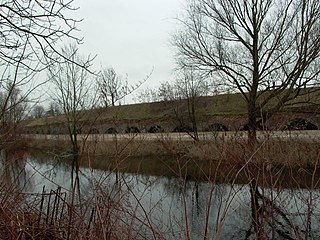
Fort VI ("Okęcie") – one of the forts of the outer ring of the Warsaw Fortress, built in the eighties of the nineteenth century. The previous in the order is Fort V "Włochy", and the next one is Fort VII "Zbarż".
89. Lech Kaczyński Monument
Monument of Lech Kaczyński on the square of march. Józef Piłsudski in Warsaw – a monument erected in November 2018 on the march. Józef Piłsudski, in front of the building of the Warsaw Garrison Command, designed by sculptors Stanisław Szwechowicz and Jan Raniszewski, commemorating President Lech Kaczyński, unveiled on November 10, 2018.
Wikipedia: Pomnik Lecha Kaczyńskiego na placu marsz. Józefa Piłsudskiego w Warszawie (PL)
90. Museum of Evolution
The Museum of Evolution of Polish Academy of Sciences is the display area of the natural history museum in Warsaw, Poland. It is the public front of the Muzeum i Instytut Zoologii or Zoology Museum and the Instytut Paleobiologii or Paleobiology Institute. It is based at the Palace of Culture and Science.
Wikipedia: Museum of Evolution of Polish Academy of Sciences (EN), Website
91. Tyszkiewicz Palace
Tyszkiewicz Palace, also known as Tyszkiewicz–Potocki Palace, is a reconstructed palace at 32 Krakowskie Przedmieście in Warsaw, Poland. It is one of Warsaw's chief examples of the Neoclassical-style, featuring large statues of the Atlantes at the entrance.
92. Osiedle Posłów i Senatorów Polskiej Partii Socjalistycznej tzw. Kolonia Praussa
Kolonia Praussa (Colony of Deputy and Senators of the PPS) is a housing estate in Warsaw's Grochów district, located in the quarter of Szaserów, Chłopickiego, Boremlowska and Żółkiewskiego Streets. The internal streets located in the colony are Byczyńska, Płowce and Lubieszowska.
93. Kościół pw. Matki Bożej Loretańskiej
The Church of Our Lady of Loreto is an ornate church in Praga, a district of Warsaw, Poland, on the east bank of the Vistula River. The church stands on Ratuszowa Street and is Praga’s oldest monument. What may be seen today is a former chapel that on its south side was once attached to a baroque church and a Bernardine monastery.
94. Roman Dmowski
The Roman Dmowski Monument in Warsaw is a bronze statue, 5 meters tall, of Polish politician Roman Dmowski in Warsaw, on Na Rozdrożu Square at the intersection of Szuch and Ujazdów Avenues. It was unveiled on 10 November 2006. The statue holds a copy of the Treaty of Versailles and carries a quotation from Dmowski's book: "I am a Pole, so I have Polish duties...". The monument has been controversial.
95. Fabryka Garbarska Temler i Szwede
Temler and Szwede Tannery Factory in Warsaw – a former factory located at 78 Okopowa Street in Warsaw's Muranów district, in the Wola district. Before World War II, the complex was owned by the Temler and Szwede Tanning Factory Joint Stock Society.
Wikipedia: Fabryka Garbarska Temler i Szwede w Warszawie (PL)
96. Old Guardhouse
The Old Guardhouse, Eastern Guardhouse – the guardhouse building was built in the years 1791–1792 as part of the Łazienki palace complex. In the past, it was inhabited by guards guarding the way to the palace on the Isle.
97. Neon Museum
Neon Museum, also the Museum of Neon is a museum located in Warsaw's Praga-Południe. The institution documents and protects Polish and Eastern Bloc light advertisements created after World War II. It is the first in Poland and one of the few museums of neon signs in the world.
98. Kościół pw. Świętych Apostołów Jana i Pawła
The Church of St. Apostles John and Paul is a Roman Catholic church located at 2 Kapelanów Armii Krajowej Street in Warsaw, in the Gocław-Lotnisko housing estate, dedicated to St. Apostles John and Paul.
Wikipedia: Kościół Świętych Apostołów Jana i Pawła w Warszawie (PL)
99. Fort Szczęśliwice
Fort Szcza, also known as Fort Szczęśliwice, is one of the forts of the inner ring of the Warsaw Fortress, located in Warsaw, in the Ochota district. It was erected in the 80s of the nineteenth century. It is located between the streets: Śmigłowca, Drawska, Zadumana and Aleje Jerozolimskie.
100. Fort IV Twierdzy Warszawa Chrzanów
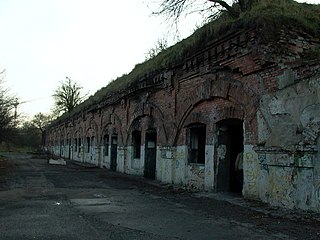
Fort IV ("Chrzanów") – one of the forts of the outer ring of the Warsaw Fortress, built in the eighties of the nineteenth century. The previous in line is Fort III "Blizne", and the next one is Fort V "Italy".
Share
Disclaimer Please be aware of your surroundings and do not enter private property. We are not liable for any damages that occur during the tours.
